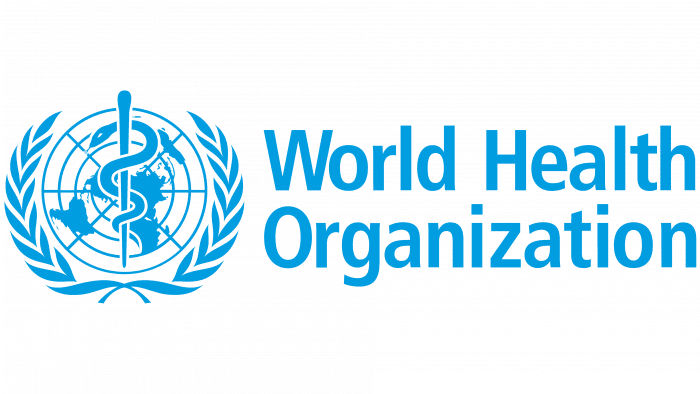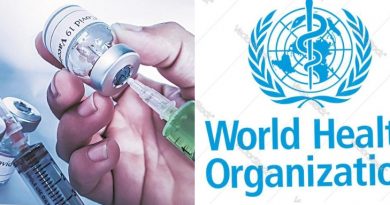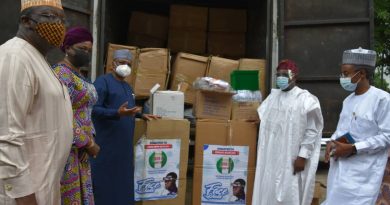Collaborating locally is key for progress globally towards health-related SDGs
Oru Leonard
A new progress report is being jointly released today by the 13 signatory agencies of the Global Action Plan for Healthy Lives and Well-being for All (SDG3 GAP). The report entitled “What worked? What didn’t? What’s next?” reflects four years of joint work by major multilateral agencies outlining what has and has not worked in strengthening collaboration and support to accelerate country progress towards health-related Sustainable Development Goals (SDGs).
This year marks the halfway point toward the SDGs, but the world is lagging behind to reach the global goals. Since its launch in 2019, the SDG3 GAP enabled creation of new collaboration structures between the signatory agencies in key areas such as sustainable financing and primary health care among others. At least 67 countries engaged in on one or more of the SDG3 GAP accelerator themes.
“We have made important progress, but we still have a long path to travel to improve the way that multilateral organizations work together to support countries. We must listen to what countries tell us and act upon their guidance,” said Dr Tedros Adhanom Ghebreyesus, WHO Director-General and Chair of the SDG3 GAP Principals Group. “I thank the partners for their collaboration and for the honest self-assessments contained in this report.”
The report provides six key recommendations to ensure that countries benefit from a more streamlined support and to realize the commitments made in the SDG3 GAP. These include:
continue the SDG3 GAP improvement cycle for health by seeking the views of Member States on how we collaborate at country-level and responding to related recommendations;
maintain GAP as a platform for collaboration;
foster stronger collaboration at the country level on primary health care and explore new thematic topics such as climate resilient health systems;
jointly apply new approaches at country level such as the delivery for impact approach;
engage more with civil society; and
work with Member States to strengthen incentives for collaboration through political leadership, governance direction and funding to support collaboration.
Key findings of the report will feed into discussions of the next United Nations General Assembly SDG Summit and the High-level Meeting on Universal Health Coverage in September 2023.
The months leading up to these key events provide an opportunity for a joint push by Member States and multilateral agencies to identify ways on how to implement the recommendations and to prepare the ground to fully leverage stronger collaboration and accelerate progress towards the health-related SDGs in the second half of the SDG timeframe.
Note to the editor:
The SDG3 GAP describes how the 13 signatory agencies will adopt new ways of working, building on existing successful collaborations, and jointly align their support around national plans and strategies that are country-owned and -led. The signatories to the SDG3 GAP are Gavi, the Vaccine Alliance; Global Financing Facility for Women, Children and Adolescents (GFF); Global Fund to Fight AIDS, Tuberculosis and Malaria (Global Fund); International Labour Organization (ILO); Joint United Nations Programme on HIV/AIDS (UNAIDS); United Nations Development Programme (UNDP); United Nations Population Fund (UNFPA); United Nations Children’s Fund (UNICEF); Unitaid; United Nations Entity for Gender Equality and the Empowerment of Women (UN Women); World Bank Group; World Food Programme (WFP); and World Health Organization (WHO).
See full report: What worked? What didn’t? What’s next?: 2023 progress report on the global action plan for healthy lives and well-being for all (who.int)
LINK: Collaborating locally is key for progress globally towards health-related SDGs (who.int)
Media contacts:
mediainquiries@who.int
You are receiving this NO-REPLY email because you are included on a WHO mail list.
If you have been forwarded this update you can click here to subscribe.
Journalists may send feedback to WHO Media Team
Share Tweet Share Forward
World Health Organization, Avenue Appia 20, 1202 Geneva 27, Switzerland
WHO urges increased implementation of recommended tools to combat malaria
25 April 2023– Marking World Malaria Day, the World Health Organization (WHO) is issuing a call for increased implementation of new and existing interventions to save lives from malaria. Nearly 1.5 million children at high risk of illness and death from malaria in Ghana, Kenya and Malawi have now received their first dose of the first malaria vaccine, RTS,S/AS01 (RTS,S), thanks to an ongoing pilot programme coordinated by WHO.
The malaria vaccine pilots, launched in 2019, are increasing equity in access to malaria prevention for the most vulnerable and are saving lives. If implemented broadly, WHO estimates that malaria vaccines could save the lives of tens of thousands of children each year.
“We have the tools to drive down malaria, a package of interventions that includes vector control, preventive medicines, testing, and treatment,” said Dr Tedros Adhanom Ghebreyesus, Director-General of WHO. “These are joined by a safe and effective malaria vaccine, which could save the lives of tens of thousands children every year. With sustained investment and scaled-up efforts to reach those most at risk, malaria elimination in many countries is in reach.”
World Malaria Day 2023 is being marked under the theme “Time to deliver zero malaria: invest, innovate, implement”. Within this theme, WHO is urging more effective implementation of available tools and strategies to prevent, diagnose and treat malaria, particularly among marginalized populations.
According to the latest World malaria report, published in December 2022, there were an estimated 247 million new cases of malaria in 2021. The WHO African Region continues to shoulder the heaviest burden of the disease – accounting for an estimated 95% of all malaria cases (234 million) and 96% of all deaths (593 000) in 2021. Nearly 80% of malaria deaths in the African Region were among children under the age of five.
New strategies and tools
Countries have made some progress in expanding access to malaria services for most-at-risk populations. Despite some progress, many people at high risk of malaria still lack access to services that can prevent, detect and treat the disease. Challenges in expanding access to malaria services have been compounded, particularly in sub-Saharan Africa, by the COVID-19 pandemic, converging humanitarian crises, restricted funding, weak surveillance systems, and declines in the effectiveness of core malaria-fighting tools.
To address these threats and support countries in building more resilient malaria programmes, WHO recently published new strategies and frameworks, including:
· a new strategy to contain antimalarial drug resistance in Africa;
· a new initiative to stop the spread of Anopheles stephensi in urban environments;
· a new framework, developed jointly by WHO and UN-Habitat, to guide city leaders in urban malaria control.
· a new toolkit to help countries assess their malaria surveillance systems and identify areas for investment
WHO has also increased the transparency, flexibility and access to its malaria recommendations. The consolidated WHO Guidelines for malaria are now available through two digital platforms: MAGICapp and the “Malaria Toolkit” app. WHO encourages countries to tailor the recommendations to local disease settings for maximum impact.
Prospects for new interventions
Continued investment in the development and deployment of new malaria vaccines and next-generation tools will be key to achieving the 2030 global malaria targets.
A second malaria vaccine, the R21/Matrix-M (R21) vaccine, if approved, could help close the sizable gap between supply and demand and further reduce child illness and death from malaria. It is a priority for WHO to continue the thorough and efficient expert review of the R21 malaria vaccine once additional key safety and efficacy data from the ongoing R21 phase 3 trial are available and provided to WHO.
Phased introductions of the RTS,S malaria vaccine in additional countries in Africa are expected to begin in early 2024.
In the vector control space, there are 28 new products in the R&D pipeline. Tools under evaluation include, for example, new types of insecticide-treated nets, targeted baits that attract mosquitoes, spatial repellents, lethal house lures (eaves tubes) and genetic engineering of mosquitoes.
Researchers are prioritizing the development of non-ACT treatments in the field of antimalarial medicines due to the emergence and spread of partial artemisinin resistance. The development of next-generation medicines, such as “triple ACTs,” which use a combination of artemisinin and two partner drugs, is underway to reduce the risk of drug resistance.
(WHO Media)




